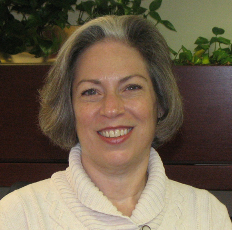National Science Board: Defining the Case for Social Science
The concerns from some U.S. political quarters about the projects paid for by the Directorate of Social, Behavioral and Economic Sciences at the National Science Foundation are well documented, observed Geraldine Richmond, a chemist and member of the National Science Board at the Wednesday morning start of a two-day meeting of the board.
But, Richmond asked the interim leader of the SBE directorate, what about those within the sciences? There are people whose own projects are funded by the NSF who also are skeptical of much social science research. “They don’t know enough about SBE to value it as a rigorous science, as I think everyone here on the board does.”
That interim leader, the SBE’s assistant director, Joanne S. Tornow, initially answered that within the NSF itself, enthusiasm for social science, especially among interdisciplinary efforts.
But Richmond wasn’t focused on people inside the NSF building, but those without. “How do you — I know have you some programs that really emphasize having social science side to that in terms of an element — but how can you push even further get the scientists, often those in more physical sciences, engaged in what I consider to be critical part and which would make the sciences in general much richer?”
“I love that question. It’s a great question,” chimed in Alan Leshner, another board member and the chief executive officer of the American Association for the Advancement of Science. “It’s been a problem forever.” It was, he added, not a problem for SBE but for NSF as a whole.
Tornow’s answer wasn’t entirely satisfying. “I’m not exactly sure how to answer that question,” she prefaced, adding that even though she was a molecular scientist by training she still hesitated to put herself in the mind of others outside the social and behavioral sciences. Ultimately her answer was to find more ways for the various disciplines to interact, so that the obviousness of SBE’s value would be made more apparent.
But in a larger sense, the whole morning session was a very convincing answer to Richmond’s query, and not just to skeptical scientists but to skeptical policymakers, too.
The National Science Board is the appointed panel that oversees the NSF. This meeting is a routine session—they’re held five times a year—and the presentation by a directorate to the board outlining its programs and those program’s general impact is hardly unusual. “The purpose of portfolio planning,” explained astrophysicist Annelia Sargent, the board member who moderated the session, “is to have an informal conversation that improves both NSF and the board’s understanding of exciting science or cross-cutting issues, highlighting emergent research opportunities of broad portfolio impact. [The] goals here are not to produce any finished product or policy but to share expertise and enhance our appreciation of NSF processes across the foundation.” But unlike the rest of NSF (sans climate science), which is remarkably popular across the political aisle, the SBE directorate has been subject to rhetorical attacks and budget paring. One bill that arose in the Republican-controlled House of Representatives would even cut the directorate’s budget almost in half, even as it raises funding for the NSF as a whole.
And so Tornow’s presentation, filled with examples of the many practical benefits that have flowed from past grants, was an answer to those critics, whether inside or outside the academy. “Why study human behavior and social organization?” she asked at the start of her remarks. “Because it matters.”
At least for today, she was appearing before a friendly audience. The National Science Board, in an unusual bit of advocacy, has said it opposes parts of that House bill. And the questions and comments from the board members clearly supported social science.
Take the statements of board member Kelvin K. Droegemeier, a meteorologist at the University of Oklahoma, who used an example dear to both meteorologists and Oklahomans: tornadoes. He noted that in 1959, a time of black-and-white TVs, transistor radios and no national radar network, some 519 people died in tornadoes. He compared that to 2011, with its Doppler radar, internet, cell phones and huge advances in prediction, and when 550 people died from tornadoes.
Droegemeier called that death toll “absolutely intolerable,” and explained it in part because “we have not realized that the science and technology alone, physical science, technology and engineering, cannot solve the problem. Ultimately, weather is a people problem, how people respond and react and understand.” And that, he concluded, is where social science can provide an answer.
As such, his anecdote served a purpose that Sargent had requested, that the session “will help us all to be better ambassadors in the community for NSF” and in the case, SBE.
Tornow’s prepared remarks bore out that effort admirably, as she sketched both the width of the SBE’s efforts, hinted at their depth and repeatedly provided real-world example of social science solving, or at least addressing, policy dilemmas.
“On the most elemental level,” she said, “the SBE sciences explain why you comprehend what I am saying. On day-to-day level, they help us navigate familiar and professional relationships, build stronger and safer communities and to run businesses, efficiently and effectively.
“And on macro level, they enable us to better understand and address the vexing political, social and economic challenges that dominate newspaper headlines, including those shown here,” Tornow added, pointed to a slide that touched on topics like energy use, immigration, inequality, disaster responses and war.
She then stressed the scientific basis of much social and behavioral research, emphasizing its objective intent and the widespread use of technological measurement. And even though dealing with human beings and their motivations can’t always provide as precise or binary data as some physical science inputs, she noted that wasn’t by any means unscientific: “like astronomers, astrophysicists and field biologists, we work frequently with observational data and measurements that are in some sense approximate.”
Tornow broke up her survey of the SBE’s reach into some general –and non-bureaucratic –categories, then offered examples of NSF research that either served an overriding national purpose or a pressing societal need.
The first broad category with a heavy SBE footprint was cognition and neural studies, under which Tornow included perceptions of risk and reactions to inequality. She cited grants ranging from projects that saw researchers developing a brain-computer interface that allows paralyzed individuals to create speech sounds to recent research that found people allocate their attention differently when resources are scarce. “When one has to allocate more attention to life’s necessities, it subtracts from attention needed to make other important decisions, for example, when and how much money to borrow.”
Another grouping she identified was studies of how, when and why we cooperate or compete, which includes the obvious look into warfare and altruism, but less obviously into economic processes like the auctioning of electromagnetic spectrum. In helping create a framework for the Federal Communications Commission to allocate the public’s telecom spectrum, the agency has raised more than $60 billion since 1994. “That’s a remarkable return on investment,” Tornow added, “which would have paid for NSF for the past nine years.”





























































































